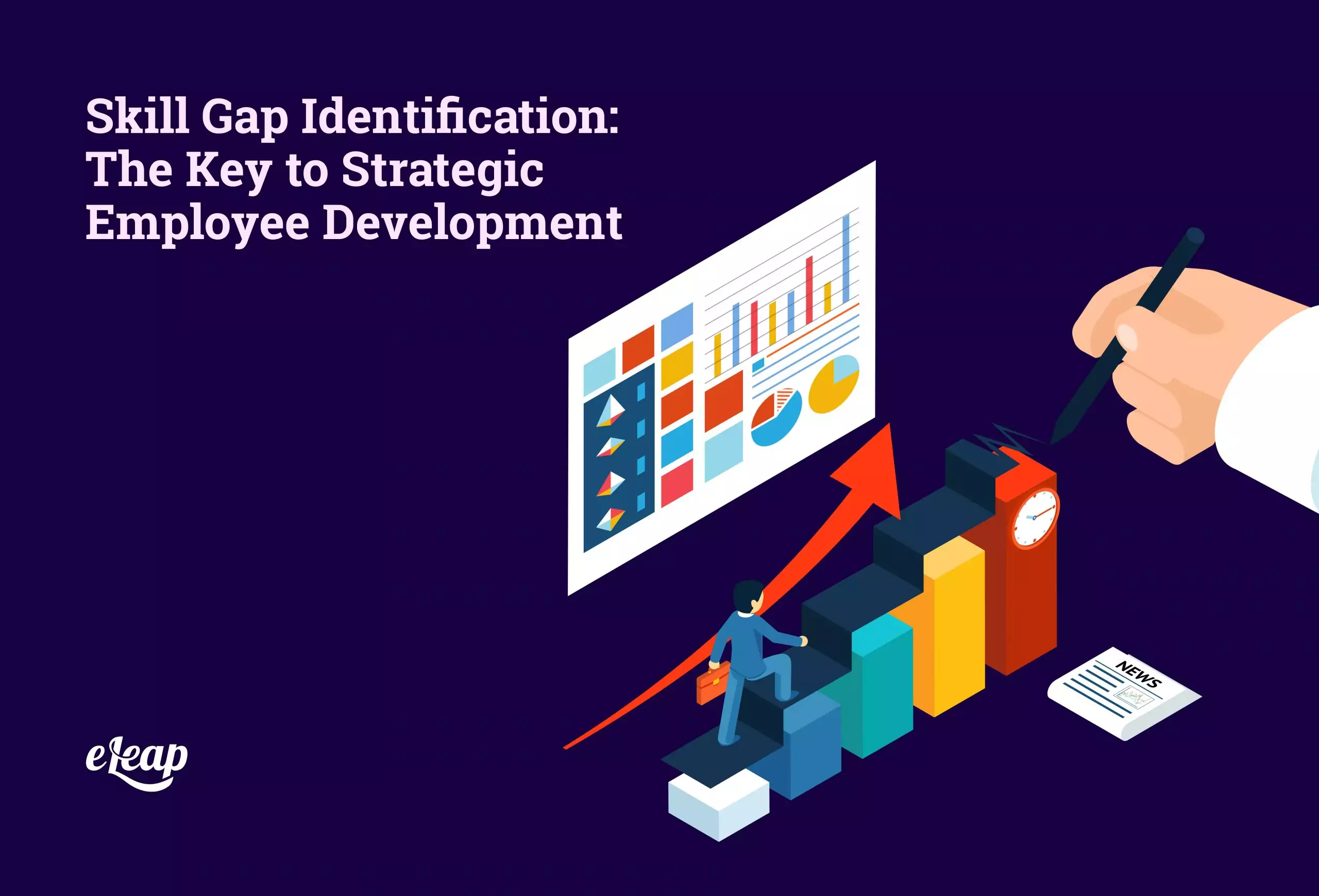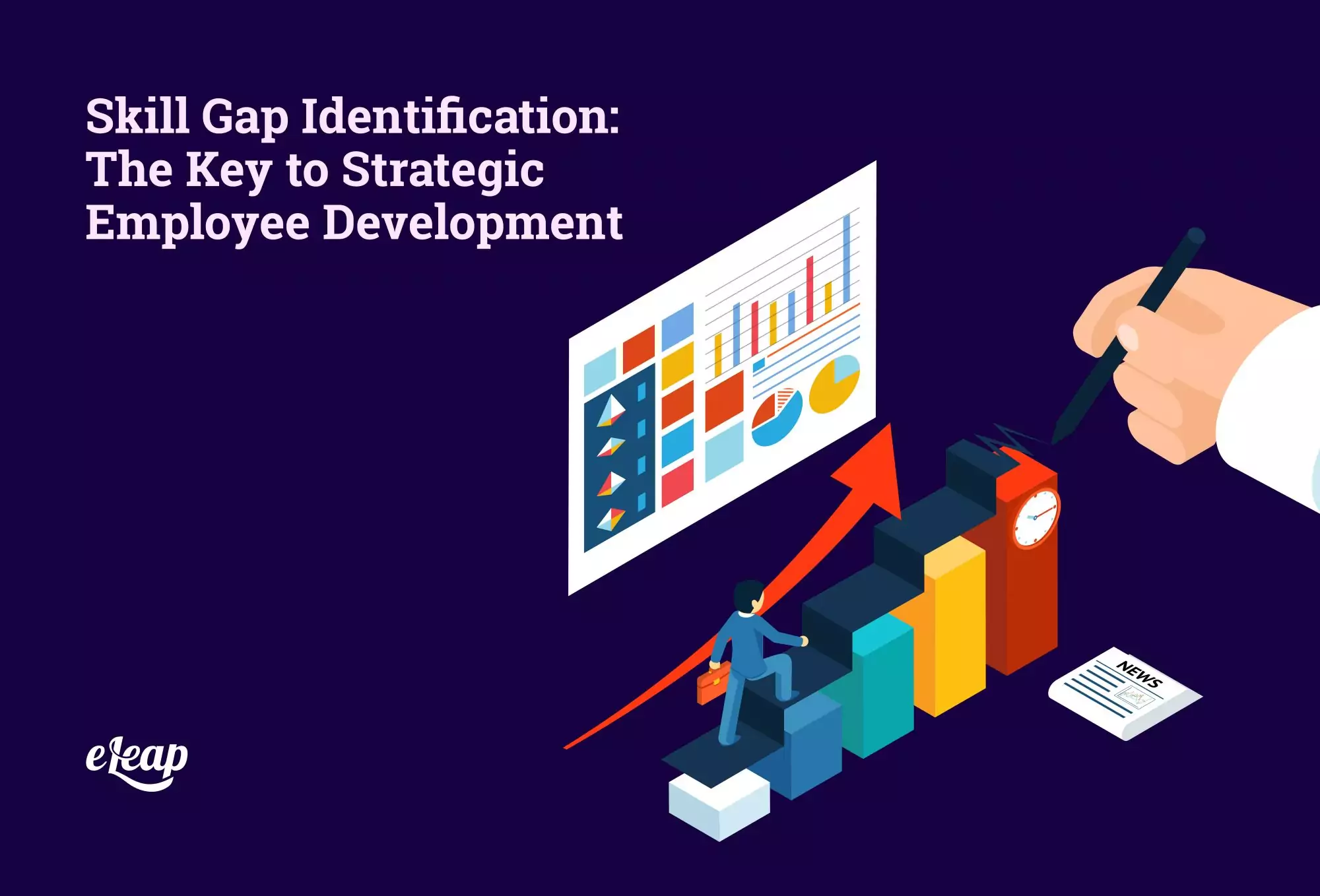Skill Gap Identification: The Key to Strategic Employee Development

What is the single greatest hurdle your organization faces? For most, it is the prospect of undiscovered skill gaps within the workforce. Without the right talent with the required skills, it becomes impossible to move forward. While some organizations don’t take this seriously employee skill gap development can a powerful catalyst to propel your organization forward.
While there will always be skill gaps, it is critical that those gaps are seen, understood, and planned for. Otherwise, they become insurmountable obstacles. However, if you can identify them, you can take strategic action, invest in employee development, hire new talent, and more, to overcome and succeed.
The challenge that many organizations face is simply identifying skill gaps. That is because they fall into the area of “what you do not know you do not know”. Thankfully, there are simple yet effective ways to identify gaps and then take necessary action. In this guide, we will explore how to identify skill gaps and develop employees in response.

Defining a Skill Gap
While skill gaps might seem self-explanatory, the truth is that each organization has its own way of defining them. These can include the following definitions:
- Skill sets missing from teams
- Skill sets missing within the entire organization
- Skill sets unavailable with new hires within a geographic area
- Lacking soft skills within existing teams
In essence, a skill gap is any situation in which specific skills are needed (either hard or soft) and are not available for any number of different reasons. And all definitions lead to the same outcome – increasing pressure on your organization’s productivity and ability to compete. If left unaddressed, those gaps will eventually erode business success.
How to Identify Employee Skill Gaps within an Organization
While skill gaps can exist throughout an organization, identifying them generally begins with the same steps.
1. Observe Your Team(s)
First, you will need to observe employees and their actions and interactions. The goal here is to determine if there is a skill gap or a competence gap and then tie that gap to hard or soft skills. For instance, challenges with workflow within a team may seem like they are related to a lack of hard skills – such as managing time – when in reality they are related to team members’ inability to communicate effectively (soft skills rather than hard skills).
2. Use Company Strategy as a Starting Point
It is also important to take a long, hard look at your company strategy and underlying goals. What roles will be needed in the short-term? What about in the future? For instance, you may find that you need to hire more customer service staff to handle the volume of phone calls you are receiving. However, the company might have a goal of moving most of the customer service efforts to an online format within a year. You really can’t have a workable employee skill gap development strategy without an unvarnished assessment of where you are.
You will need to balance future goals with immediate needs. In the situation described above, it would be helpful to determine how many customer service reps you will need once the online shift happens, calculate the number of new hires you will need to make, and then determine what training you will need to provide the department to make the shift easier while still delivering a great experience during the transition.
3. Expand Your Role List
Based on your study of company strategy, immediate needs, and long-term vision, you should have an idea of what roles will need to be filled throughout the organization. Remember that there’s no such thing as a standalone department, either. That is, every department within the organization is interrelated with every other department, so a role within one area will affect performance in another.
4. Define Skills for the Roles
With a better understanding of what roles will need to be filled, you can start fleshing out an idea of what skills will be required for each of them. Ideally, you will be able to create a skill inventory list that maps skills to positions and departments. Based on that map, you can begin making other decisions.
5. Take Inventory
With your map of skills in hand, it is time to turn to the ranks of your current employees. If you have a modern LMS, chances are good you have an idea of most employees’ skills, strengths, and aptitudes. Use this information, combined with the role-skills map you created previously, and start determining if you have the talent you need already in-house. However, this will require that you look deeply.
- Some employees may have the skills, but not the temperament for the position.
- Some employees may have the skills but prefer a different career path.
- Some employees may have the aptitude, but need to develop the skills further.
- Some employees may have raw talent and ability but may require significant development to be well-suited to a new position.
It can also be challenging to inventory your existing employees’ skills. Even the most robust LMS will only provide you with access to some information. To get more data to support the best possible decisions when closing skill gaps, consider the following steps:
- Use 360-degree review information from coworkers and managers to identify skills and competencies
- Use role play to help test for aptitudes and strengths
- Use testing to help narrow down your options
- Observe employees during real-world situations
By the end of this process, you should have two things – information about the skills you need and information about the skills your employees currently possess, or the ability to develop employees to fill specific gaps. Based on that information, you can determine where your organization stands and what must occur to close any skill gaps.
Now Is the Time
Skill gaps exist within every organization, even if they are not immediately visible. Now is the time to close them, before they take a toll on your ability to compete within your industry. With the right steps, an understanding of your current employees’ strengths and skills, and knowledge of key points in the company’s strategy, you can begin to close those gaps and ensure you can outperform your competitors.